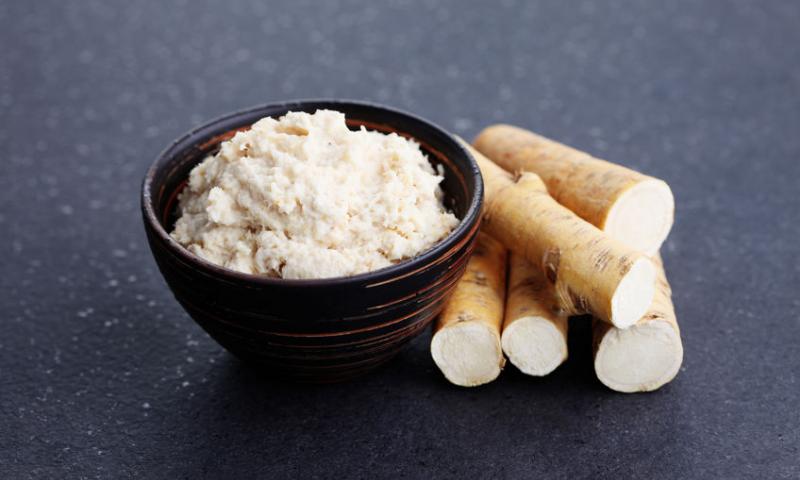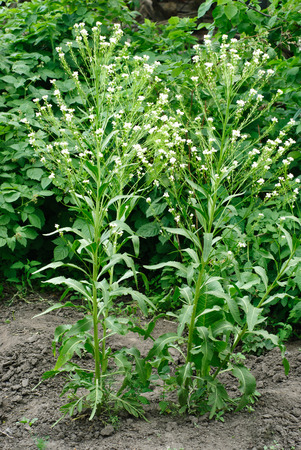 />
/>
Latin Name: Cochlearia armoracia
Family: Brassicaceae
Genus: Armoracia
Origin: native to southeastern Europe
Natural Habitat: Europe (with the exception of the Arctic regions), Siberia and the Caucasus. The plant has been brought in Asia and America and now grows there as well. It grows on the banks of rivers and in damp places.
Botanical Information: The root is thick and fleshy. The stem is straight, branching, 50-150 cm high. Basal leaves are very large, oblong or oblong-oval, crenate, heart-shaped at base; lower leaves are pinnately-divided and oblong-lanceolate; upper leaves are linear, entire-edge. Calyx is about 3 mm long. Petals are about 6 mm long, white, short-nodular. Fruits are pods, oblong-oval, swollen, 5-6 mm long; seed capsules are with 4 seeds.
CHEMICAL COMPOSITION
All parts of the plant contain essential oil, which has a sharp specific smell and taste.
Fresh root juice contains the protein substance lysozyme, which has antimicrobial activity, ascorbic acid (0.25%), thiamine, riboflavin, carotene, fatty oil, starch, carbohydrates (74%), and resinous substances.
Ascorbic acid (0.35%), carotene, alkaloids were found in the leaves; fatty oil and alkaloids - in the seeds.
There are many mineral salts (potassium, calcium, magnesium, iron, copper, phosphorus, sulfur, etc.) in the horseradish roots. The yield of essential oil from the roots after fermentation is 0.05%, its main constituent is allyl mustard oil. In addition, the essential oil contains phenylethyl- and phenylpropyl-mustard oil. The plant also contains horseradish peroxidase, a luminescent enzyme used in molecular biological techniques to determine specific proteins in a sample.
“Look deep into nature, and then you will understand everything better”
Albert Einstein
*This article is for informational purposes only. We suggest consulting with a physician before using these or any other herbal supplements.
